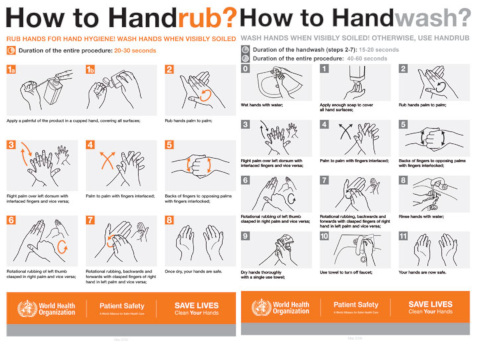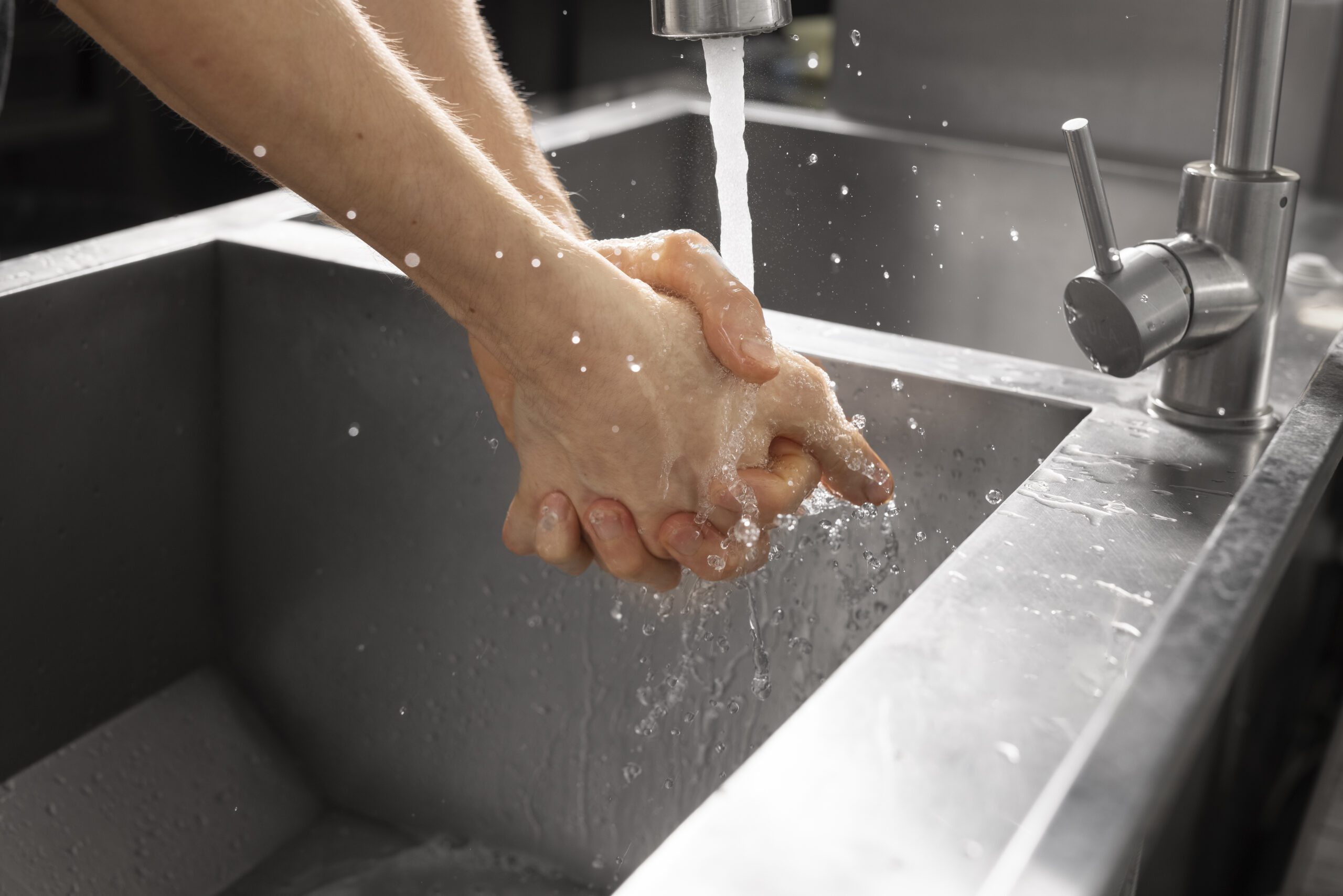
- /
Editor’s note: This article was originally published in 2019 and has been updated in July 2020, with more updated and accurate information.
Infections acquired in health care settings affect hundreds of millions of patients worldwide every year. Most of the germs that cause serious infections in healthcare are spread by people’s actions, drawing increasing attention from patients, insurers, government and regulatory bodies.
Hand hygiene is the main measure to reduce infections. Numerous clinical studies have proven that adhering to a strict hand hygiene routine has directly related to a drop in hospital infection rates. In Australia, hospital-acquired infections (HAIs) affect over 180,000 patients a year.
Although many individuals understand the importance of hand hygiene, the lack of compliance in health care settings is a worldwide problem. In order to improve current statistics and increase compliance, a multimodal approach is recommended.
World Health Organisation’s Recommendation – Multimodal Compliance Approach
Multiple studies have confirmed the effectiveness of the World Health Organisation’s multimodal approach, in increasing compliance rates and reducing HAIs.
The multimodal strategy consists of several elements implemented in a way to guide action and provide a clear focus for those aiming to provide practise and reduce HIA.
According to WHO, key elements of a successful hand hygiene compliance strategy are:
- Introducing infrastructural changes such as improvements in hand care product accessibility
- Educate and train your staff on proper hand washing techniques
- Monitor their compliance and provide active performance feedback
- Put up and distribute hand washing reminders throughout the hospital
- Create an organisational culture that prioritises good hand washing practices
- Set individual and group level compliance improvement goals
- Introduce reward incentives to encourage positive behaviour
- Create a hospital climate that emphasises individual and unit level accountability
Creating compliance solutions based on the provided strategies is a great start. Hospitals around the world are launching interesting initiatives with fresh and creative approaches to tackling hand hygiene compliance and we’ve done the research and created a list for you!
Taking a Fresh Look at Hand Washing Improvements in the Hospital Setting
1. Use Alcohol-Based Hand Rubs as First Line of Defence
With the ease of using alcohol based hand rubs, increased availability of its stations encourages users to clean their hands whenever its’ present.
Extensive research suggests the use of ABHRs due to the following advantages they bring:
- Less time-consuming as compared to hand washing
- Can be installed at any point of care for added convenience
- Help reduce the instances of hand irritation
- Require fewer resources and are the most cost effective alternative compared to installing extra washrooms or basins.

Image from slideplayer.com
Traditional hand washing will take 20 seconds for rubbing and 20 seconds for rinsing. Plus at least 10 for drying. That’s almost double the time of sanitising hands with a hand rub.
So a hand rub is a time-saving tool when many hand washing events are required. Alcohol hand rubs are shown to increase adherence to recommended hand washing practices. In a study conducted by Hugonnet et al, 2002, increased availability of alcohol based hand rubs along with other methods, increased overall compliance from 38.4% to 54.5%, with hand rubbing increasing from 5.4% to 21.7%.
With a less time consuming option available compared to traditional hand washing, alcohol based hand rubs have proven to increase hand hygiene compliance in health care settings.
Fresh & Clean is a reliable supplier of automatic hand sanitiser dispensers. They meet even the most stringent healthcare industry requirements. But let’s get right down to the benefits:
- The no-touch design of Fresh & Clean dispensers reduces the chances of transmission of infectious diseases
- The units automatically dispense the right amounts of solution required for thorough sanitising
- The moisturiser included in the formula prevents hand dryness and irritation
2. Boost Compliance Rates By Using Visual Reminders
Healthcare staff are busy. With a constant possibility of an emergency occurring any moment, they can easily lose track of the last time they washed or sanitised their hands.
Humans also tend to neglect the thoroughness of a task when it becomes habitual. So, a visual reminder carefully placed, about proper hand washing procedures is also critical.

Image from Hand Hygiene Australian
A 2016 clinical study showed that displaying images of bacterial growth provoked feelings of disgust and motivated health care staff to comply with hand hygiene guidelines, increasing compliance rates.
Want to initiate some action?
Place the signage in areas where healthcare workers are required to wash their hands. Use the following visuals to prompt and remind your healthcare workers to practice good hand hygiene:
- Educational posters. Display those in point-of-care and hand wash station areas.
- Informational brochures. Hand them out to your staff and distribute them at nurses stations.
- Printed out fact sheets and infographics. Put them up on your hospital corridors.
- Visual in-house notices with motivational challenges. Use hospital unit boards to put up latest information about how the staff scores at washing hands. Alternatively challenge your staff by listing results from different hospital wards.
- Show your staff images of bacterial cultures. Get them to pair the images to bacterial cultures sampled from their hands. This method had a marked effect in a Detroit hospital trial study.
You can also use fact sheets to clear up any misconceptions around infection prevention guidelines.

Image from www.cdc.gov
3. Implement Video Surveillance Systems
Although some individuals may deem this method as overbearing, the cost of hospital acquired infections is alarming. In Australia, it is estimated that surgical site infections could be costing taxpayers $268 million per year.
With a simple and less costly method of video surveillance system to monitor compliance rates of hand hygiene an option, why would you not try it?
University hospital in Long Island North Shore took advantage of modern technology to track any entrance into the intensive care unit. Each such event triggers the activation of cameras that then records whether the staff are washing their hands. Compliance rates are then monitored.
A University of Miami study examined the efficacy of visual cues in hand hygiene improvement. And they released some very interesting results.
They’ve found that the visual cue indicating a staff member is being surveilled had the most powerful effect on healthcare workers’ hand washing behaviour.
4. Appoint a Number of Inhouse Hand Washing Coaches
In contrast, other hospitals would rather pin their hopes on human monitoring. They engage trained hand-washing coaches who monitor, reward and penalise hand washing behaviour.
Hospitals that are members of the Greater New York Hospital Association are one such example. They track infection control procedures and hand hygiene compliance.
Appointed staff members hand out red cards and gold stars to their peers based on their hand washing performance.
Similarly, the Alamance Regional Medical Center in Burlington USA appreciates the benefits of observer-based training. It’s a coaching method correcting healthcare staff’s hand washing behaviour in real-time.
This direct communication allows them to work out better ways to address the reasons of poor hand hygiene compliance.
5. Launch Creative Hand Hygiene Campaigns
If you’ve tried everything and nothing seems to work, you may have to spur innovation. Sometimes what you need to get the change going is to elicit response from your staff. Challenge and provoke them.
Hospitals are starting to tap into their creative capacities, to come up with true behaviour-changing programs.
We’ll disclose only a few brave pioneering attempts.
- Vanderbilt University Medical Center’s clean hands initiative turned out to be a great success. The hospital delivered additional hand sanitisers at the entrance and exit points of each patient room. Then they took this further to accomodate the needs of their nursing staff. They supplied some adjacent lotion dispensers and hand sanitisers enriched with a hand-moisturising formula.
- Connolly Hospital in Dublin has come up with a way to generate a little extra motivation to their staffers to wash their hands. They issue parking permits only to those employees who underwent their mandatory hand hygiene training.
- University of Chicago Medicine set up a one-of-a-kind Big Wash initiative. This 24-hour event used a high-tech activity monitoring system to track hand washing in staff, visitors and patients. The initiative resulted in 97,000 hand-hygiene events and doubled compliance rates. It included handing out educational charts, stickers, cookies and prizes for units that earned the highest scores.
- Royal Victoria Regional Health Centre went beyond in their efforts. Hoping to get more serious results, they introduced an integrated system that displays hospital staff hand hygiene compliance rates. Everyone can see the screen readings which are placed at the food court, at all entrances and near staff badge-in kiosks.
6. Use High-Tech Hand Washing Scanners
Hospitals across Europe and the U.S. are starting to implement the latest technology solutions to lower the rates of HAIs.
Latest technology scanners and other innovative electronic systems have extensive use in the hospital setting. They can be used for:
- Automated monitoring of hand hygiene compliance
- Educational purposes
One of such automated systems is the Semmelweis Hand Hygiene Scanner that provides an objective evaluation of the thoroughness of the hand washing procedure.
This latest technology device detects residual germs on hands. And can be used simultaneously for surveillance and educational purposes. The immediate feedback the scanner gives out helps healthcare staff perfect their hand washing technique.
Add ABHRs with an added moisturising balm you have an incentive you can pair up with a digital system like this.
Rise to the HAI Challenge
When it comes to managing hospital acquired infections now is the worst time to rest. The massive rise of antibiotic-resistant bacteria in Australian hospitals creates the urgency that requires you to pitch into the issue.
Now, gaining a sort of aerial perspective on innovations in this field, you can take a shot yourself. Add some fine-tuning to build a model that suits your unique healthcare organisation climate.
Go for it! It’ll be fun, culture-changing and it’ll pay off. Fresh & Clean steps forward to help you prove your commitment to safety and exceed expectations.
Hire a hygiene service that will help you ensure the highest hygiene standards for your healthcare facility.
Our highly versatile offer of washroom supplies will be all that you’ll ever need. Whatever it is – soap dispensers, hand and toilet seat sanitisers, air fresheners. It’s on Fresh & Clean now.
But wait – there’s more.
Our rental services include products beyond hygiene. Our selection of professional medical workwear, first aid kits and clinical waste disposal units will help you stay EPA and WH&S compliant.
Get in touch with us today and we’ll help you keep your organisation as safe and secure as possible.






